Are churches setting the tone for reparations? How movement is growing from Hyde Park to Texas
St. James' Episcopal Church in Hyde Park was built by slave owners.
Some of those slaves are buried behind the church.
"While we don't know where most of those people who had been slaves were buried, we did know where at least one of them and his family were buried," said Rev. Charles Kramer. "It was within 100 feet, maybe 50 feet, of the guy who owned them."
Kramer, who retired as the rector of the church, is on the Episcopal Diocese of New York Reparations Commission, a role he stumbled into after learning about the graves.
A concept proving viscous in public policy, nearly stagnant at the federal level, is gaining momentum at the altar.
Major faith institutions are addressing reparations in the United States, often ahead of any states where they congregate. The efforts serve as direct attempts at reconciliation for their own involvement in another institution that dawned centuries ago: slavery.
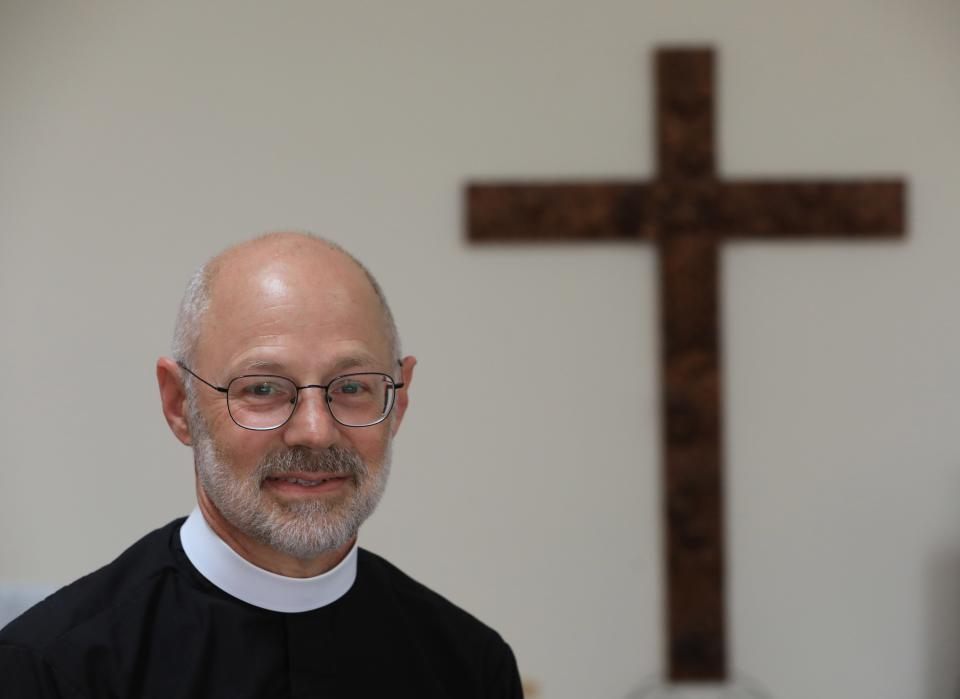
New Jersey’s Princeton Theological Seminary vowed more than $27 million. Virginia Theological Seminary, $1.7 million. Catholic Georgetown University, $400,000 a year. Episcopal dioceses of New York, Long Island, Texas and Maryland had all launched reparations programs by 2020, while others remain in the works. Texas committed $13 million, Maryland and New York each about $1 million. The list continues.
Reparations: Apologies, committees, but little action: Database on state, city progress
USA TODAY Opinion: Reparations call is a moral reckoning white Americans can no longer delay
Poughkeepsie's Champions: Memorial to celebrate city's civic leaders, see what's planned
"Are they setting the tone?" posed Rayshawn Ray, a senior fellow at the Brookings Institution. "In short, I think the answer is yes."
Congregants donated people like cattle. Churches grew with tobacco-stained funds. Those among the holiest ranks bought and sold men, women and children. In the Colonies, this history started with the Anglican Church, later dubbed Episcopal. But other denominations, Catholics, Presbyterians, Lutherans, would cultivate their presence in America preaching love, charity and devotion — while owning other people.
Studied and stifled, the issue of reparations for the country’s role in over 200 years of chattel slavery or the following century of Jim Crow segregation has progressed in piecemeal efforts across some states and municipalities.
Evanston, Illinois, became the first city to offer such reparations to its Black residents, chiefly aimed at addressing decades of discriminatory housing practices, in March 2021. In June of the same year, California would be the first state to officially set up a reparations task force.
A surge of theological interest is being led largely by long-established Protestant churches. The Episcopal Church has been the most active denomination, while others, like the United Methodist Church, Evangelical Lutheran Church of America and Presbyterian arms, lean in similar directions.
Reparations have come either monetarily or symbolically, like the Episcopal Diocese of Southern Virginia’s “Repairers of the Breach” speaker series or Georgia's diocesan commitment to help create a racial reconciliation center.
“They are able to move a lot more quickly in the private space than they can in the public space,” said Ray, a professor and executive director of the Lab for Applied Social Science Research at the University of Maryland. “I also think religious organizations and institutions are viewing themselves as playing a role in helping to heal Americans.”
Individual churches, interfaith efforts and more can be traced across the country, while some umbrellas like the Roman Catholic Church or Southern Baptist Convention have largely not approached reparations — with certain notable exceptions.
Other denominations have expressed support for a federal program or issued formal apologies.
Across the pulpit, though, recent polling data shows Americans are generally opposed to reparations in the form of payments. Polls in 2021 suggested 62% were opposed and 38% supported. But support has grown from 19% in 1997.
Large price tags grab the spotlight, from payments and scholarship funds to community grants or avenues still left undetermined.
Yet in most cases, years of research inform these decisions to make amends.
The Episcopal Diocese of Texas acknowledged that its first bishop was a slaveholder. An Episcopal church in New York City erected a plaque cementing that the building’s construction was made possible by slavery. The Minnesota Council of Churches launched a first-of-its-kind “truth and reparations” initiative across 25 member denominations.
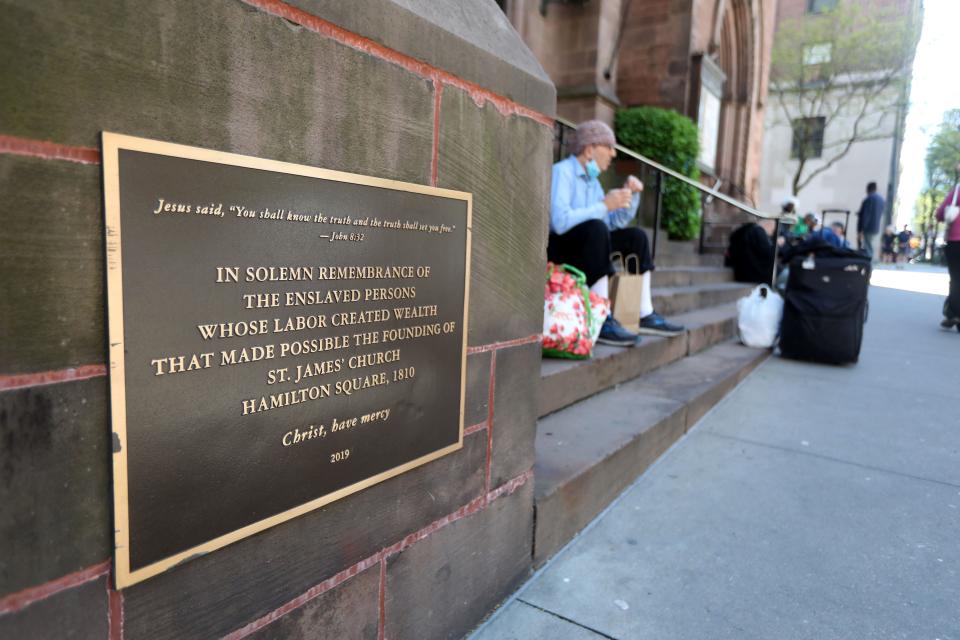
The Rev. Canon Christine McCloud said her Maryland work is fueled by similar truth.
Her position as canon for the mission now revolves around reparations. She wants to see more parishes join the call from a diocese with roots as old as the first English settlements on the shores of Chesapeake Bay.
The priest feels these efforts could pose a viable framework.
“I really truly believe," she said from her Baltimore-area study, "if our faith communities cannot get this right, I do not have a reasonable hope or expectation that we can get it right out in the world.”
‘People would rather eat glass’
McCloud thinks about her sons.
The ranking faith leader and Black mother of two is a long way from her start in the Diocese of Newark. Selected by her bishop to help guide the Maryland diocese in diversity and inclusion efforts by 2018, she now deals deeply in reparation work.
Even fueled by the concept of leaving something better behind — it doesn’t get any easier.
“Let me be clear,” McCloud said. “It's not easy as a person of color, whether I'm a clergy person or not, to go into a predominantly white congregation and have a conversation about reparations.”
The diocese made history in 2019. After much debate at its 235th diocesan convention, Bishop Eugene Taylor Sutton called for a vote on the “Resolution on Racial Reconciliation.” And to some surprise, “All opposed?” was answered with near complete silence.
By the next year, the ayes also committed to creating a $1 million seed fund.
Not every congregation had buy-in. McCloud travels to parishes across the diocese’s 10-county reach, with about 100 to choose from in the state. The faith community is roughly 90% white.
“People would rather eat glass than talk about two topics: reparations and racism,” McCloud said simply. “Grown men will go running, screaming from a room rather than have a conversation around it — which points to how important it is for us to have it.”
This February, the first grant applications opened for any organization within the region with "proven history of doing the work of restoring African American and Black communities.” As of early June, the diocese’s reparations task force has already awarded $175,000 in grants to six community groups in its first distributions.

These milestones have in many ways grown from seeds planted decades earlier.
Several resolutions marked early motion for reconciliation in the Episcopal Church by the early 2000s, and dioceses like New York and Newark set on similar paths. The Free State’s diocese began a program called Trail of Souls to mark 150 years since slavery’s abolition. That effort led to nearly 30 congregations joining a call to examine their history.
“The Episcopal Church benefited greatly from the act of slavery,” McCloud said. “We need to remember that as a faith institution. And because of that, we really are called to take the lead in doing this work.”
The same call echoes along the East Coast.
‘The worst kind of slavery’
Jennifer Oast transcribed 17th-century wills as a graduate student.
While studying at the College of William and Mary, the Virginia native found herself combing through the last official words of people looking to bestow any wealth they could.
In many early documents, Oast noticed a common way of transferring that capital: cattle.
Cows ensured that heirs received an investment that could keep giving. Women especially, she said, would divvy up cattle, as well as denote who would receive calves yet to be born. The pattern proved consistent.
“They’re imagining this growth, right?” said Oast, now a professor at Bloomsburg University in Pennsylvania. “Well, when slavery became prominent in Virginia, and in the Colonies in general — you gradually start to see those same patterns with enslaved people.”
Human beings became line items to pass down, as did their unborn children.
The template extended to Sunday service.
Early on, congregants donated cattle to churches, knowing they would reproduce and deepen parish pockets. However, the then-student noticed that after about 1680, many church records — if still existing — described the donations of people as they did these farm animals.
“Some people have always known this history,” Oast said. “But it was mostly forgotten or pushed under the rug.”
Mary Klein has seen more researchers in the past year than the past 20. The longtime Maryland archivist now fields anyone from doctoral candidates to genealogists, after her diocese began its own “truth and reconciliation” process.
Deeper: My enslaved ancestors were sold to support Georgetown
First-person: Slavery, trauma and modern America
Around 1690, establishing the Anglican Church began in part against threats of dissent. By 1702, the archivist wrote, only Anglicans could hold public office — so the several vestries were, in effect, local governments. They received taxes by tobacco pounds, building churches, paying clergy.
The church's very economic welfare and social status were embedded in slavery. And these patterns stitched the East Coast together.
Even as slavery was abolished, Black residents faced multiple decades of suppression, through sharecropping, unfair wages, legalized discrimination and school segregation.
Faith institutions remained silent.
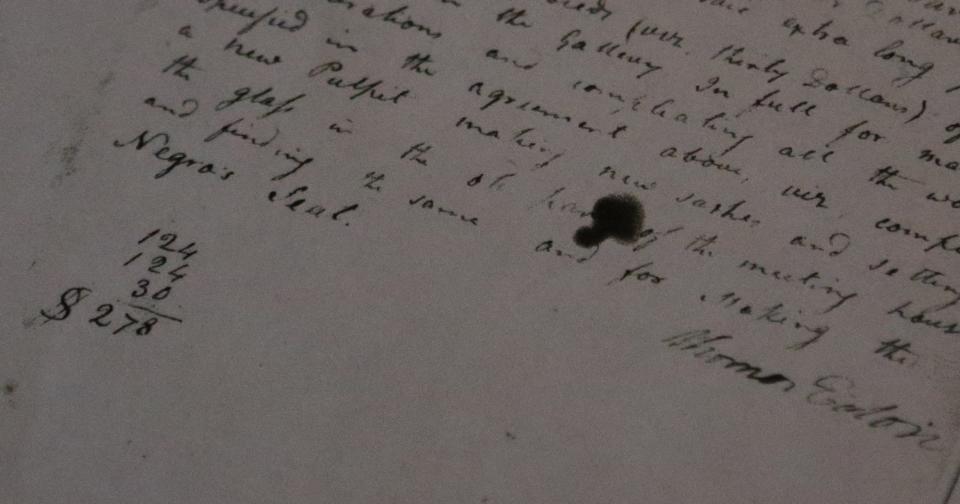
“It's important to acknowledge that this is long overdue — the current wave of Christian responses to the call to reparations comes only after literally centuries of neglect,” said Duke Kwon, an author and Presbyterian pastor serving near Washington, D.C.
Calls from Black communities across the U.S. went largely dismissed, from the end of the Civil War to the 1960s.
Today, interest has swelled again, after George Floyd’s 2020 murder sparked renewed movement on racial justice.
“But I also would say it is encouraging,” Kwon continued. “It's thrilling to see more Christians in America beginning to see with moral clarity not only the legitimacy of reparations from a Christian point of view, but the urgency of it.”
New York keeps reaching for traction
Ripples aren't felt everywhere.
Valerie Mathews hadn't heard chatter about reparations from Grace Church in Nyack, about 30 miles outside New York City.
Familiar with being the sole person of color in the room, the senior adjunct English professor at Westchester Community College believes these conversations would come with more diverse congregations.
“Unless there’s a way for people to feel a part of something," she said, "I don’t think we can get to reconciliation."
But work in the greater Episcopal Diocese of New York has been brewing for some time.
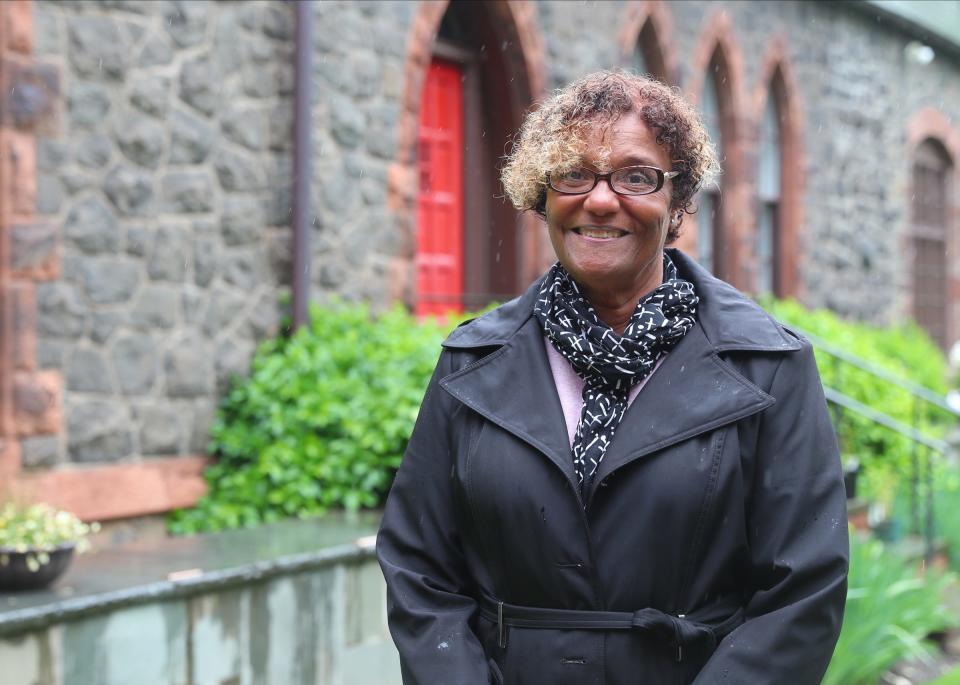
Sixteen years and many discussions after the first Episcopalian calls for reparations, the New York Diocesan Reparations Commision has yet to decide what its program should look like.
It can seem impossible to separate politics and faith, says commission co-chair Cynthia Copeland.
“The whole point is seeing every individual with dignity and giving them respect ... The question is, how do you reconcile?” she asked.
As Copeland sees it, the commission has “never not had a fire under its butt.”
The commission was elevated from status as a committee about a month ago. It will allow the group a "bigger platform" within the dioceses, more of a direct line to the leadership and permanency within the institution's structure.
"It's a statement to the diocese itself that we are very much committed to a transformation of our institution," Copeland said.
This diocese, one of six in New York, formed her group after an Episcopalian General Convention called on churches to respond to their history of segregation and discrimination in a 2006 resolution.
The then-committee was tasked with researching the church’s past and suggesting ways to reconcile involvement in the Transatlantic Slave Trade.
This diocese, one of six in New York, formed her committee after an Episcopalian General Convention called on churches to respond to their history of segregation and discrimination in a 2006 resolution.
The commission was tasked with researching the church’s past and suggesting ways to reconcile involvement in the Transatlantic Slave Trade.
Initial ideas about reparations came slowly. Much like rhetoric coming from some politicians and constituents outside church walls, parishioners expressed concern about being pushed “to give up money."
In 2019, though, the Episcopal Diocese of New York committed $1.1 million from its endowment to fund the committee’s efforts. That same year, the Episcopal Diocese of Long Island — covering the New York City boroughs of Brooklyn and Queens along with Nassau and Suffolk counties on Long Island — dedicated about half a million.
Now, it’s up to the reparations committees to decide how to distribute that money.
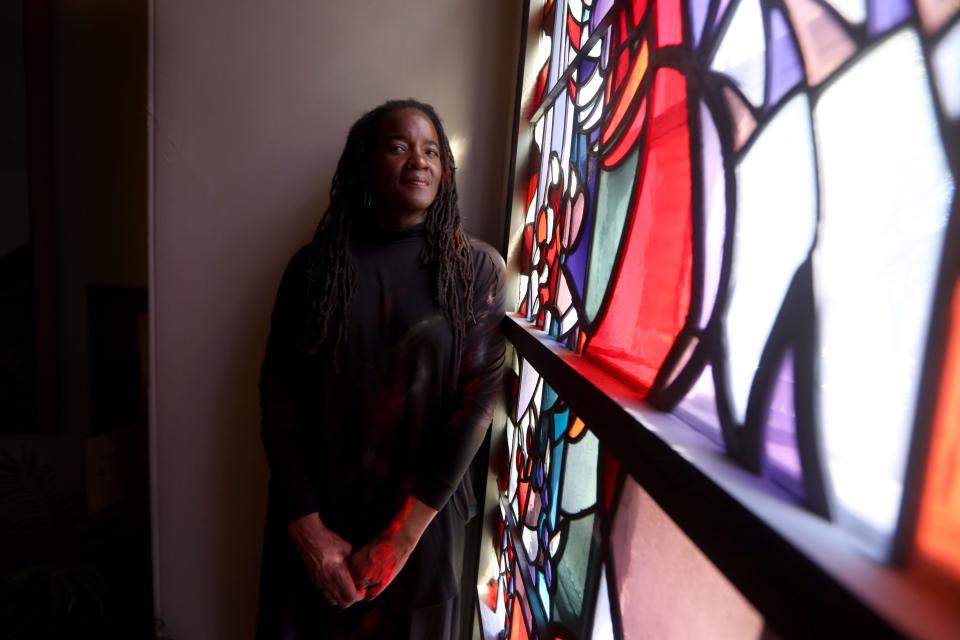
“Yes, we need money to do the things that need to happen," Copeland said. "But we need to talk about a different dialogue, a different approach, an education."
The commission has offered education to its nearly 200 churches. The group created a video; it published a study guide; it organized an all-day event marking 200 years since the abolishment of slave trade in the U.S.; it ran workshops across the diocese to encourage other parishes.
Still, the commission has not seen the “traction” it hoped.
“We came to realize that we may be a little ahead of the game,” she said. “We have to meet people where they are.”
'It was lamentable'
Kramer, of St. James' in Hyde Park, was asked to be on the Episcopal Dioceses of New York Reparation Commission, in part, because of his work educating others inside and outside the church about slavery in the Hudson Valley.
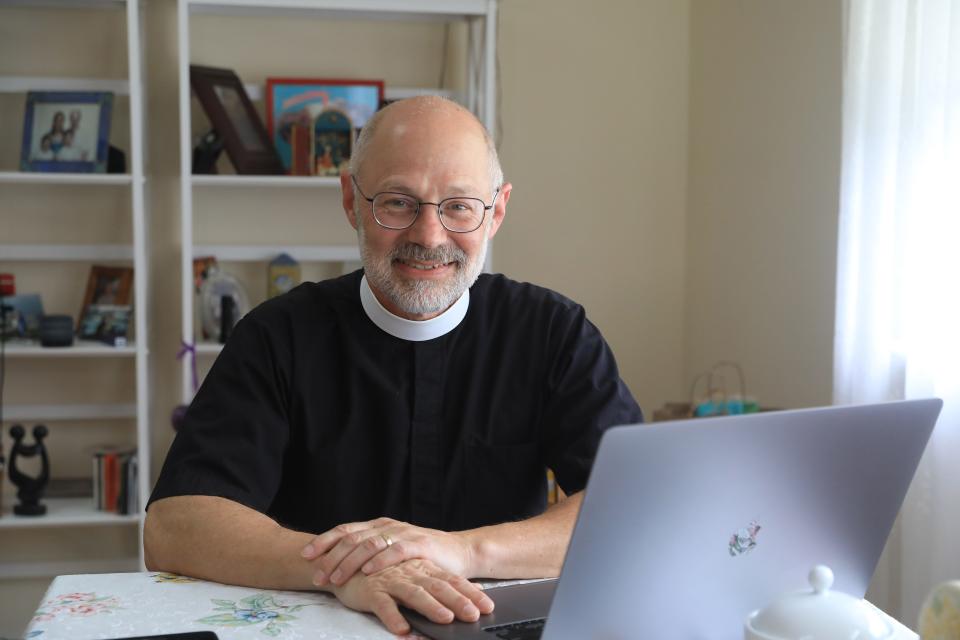
"Inside the church, most people pretty readily accepted that this was, in fact, something we did and it was lamentable," Kramer said. This may be because the church provides both the language and opportunity to have these difficult conversations, and the willingness.
The process of reparations for the church is broken down into three phases. The first is called "Lamentation" which is understanding the issue and recognizing it was wrong. The second phase focuses on understanding the concept of apology and why it was important to apologize for something that happened so long ago. The last phase is deciding on what reparations would look like for the church.
While the commission hopes to formalize an apology and offer resolutions as to what shape reparations may take this year, individual churches continue to make their way through the process.
St. Paul's Episcopal Church in Poughkeepsie is working its way through "uncovering the truth-telling and the lamentation phase," said Rev. Dr. Mary Barber, who just started at the church in the Fall. The church does not have a history of slavery, but is located in a largely African American neighborhood.
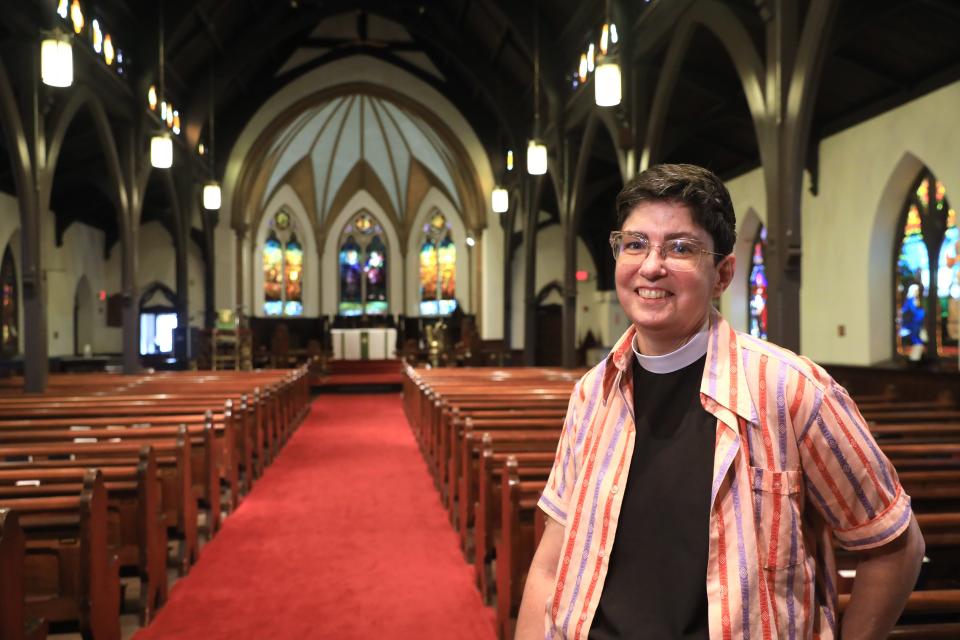
The church, which is located on the north side of the City of Poughkeepsie, serves more people at its food pantry than it does in its pews. Churches like this one may not have the funding or the congregation numbers like those in the suburbs, though they carry the weight of providing resources for the growing needs outside of its walls. Barber works part time at both St. Paul's and a church in Newburgh, because neither church can afford a full-time priest.
"Reparations can partly be about the church's exact history with slavery, and it can also be about equity in general," said Barber, who was a physician before becoming a priest and has witnessed inequity in healthcare. "It can also be about why are some churches in some neighborhoods are more resourced than other churches and how can we share resources better."
Kramer doesn't know if sharing resources will be part of the commission's resolution, but said it was in the "mix of the conversation.
"The diocese has been really aware for a long time that the resources are allocated separately, having said that, the way we are organized, every congregation is its own independent kind of thing," he said.
An unclear future for slavery reparations
No conversation about religion and reparations should ignore the Catholic Church’s role, according to Black Catholic historian Shannen Dee Williams.
“It's interesting how as institutions begin to grapple with foundations and colonialism and slavery, that the Catholic Church is still, in many regards, behind its Protestant counterparts,” said Williams, an associate professor of history at the University of Dayton in Ohio. “Despite the fact that the church has played such a seminal role in these institutions.”
Leaders of the Jesuit conference of priests, a prominent order of Catholic priests, vowed in 2021 to raise $100 million to benefit the descendants of the enslaved people. The still-unfolding effort is the largest to be connected to the Roman Catholic Church.
In 2018, the Catholic sisters of the Religious of the Sacred Heart — who owned about 150 people in Louisiana and Missouri — created a reparations fund to finance scholarships for African Americans to attend their school.
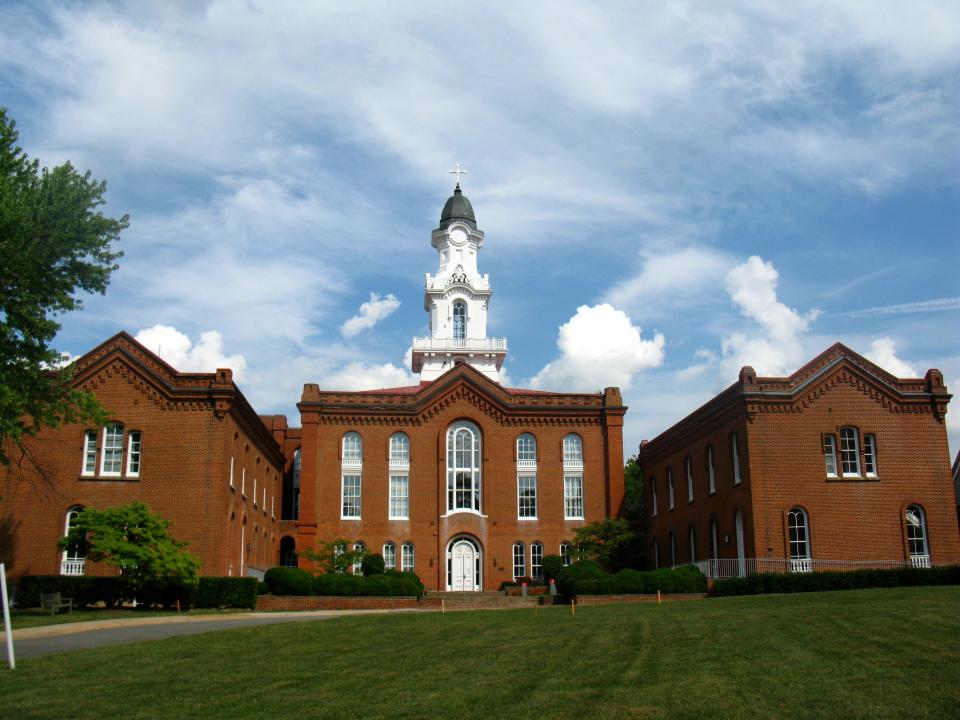
Largely, though, the church remains among the holdouts.
“We have not even begun to really scratch the surface of the depths of the moral depravity required of individuals, of religious orders of men and women, who owned people, who traded in human flesh,” Williams said.
Reparations in the private sector plot around the map.
“One of the ways to get started is to actually engage in a truth and reconciliation process,” said Ray, the University of Maryland professor. “Figure out the history, the legacy of your company or religious organization.”
In New York, the Reparations Committee is preparing a diocesan retreat to propose such recommendations — with hopes that suggestions will be endorsed at its next convention.
Maryland leadership believes the ongoing grant model can help in strengthening Black communities throughout the state.
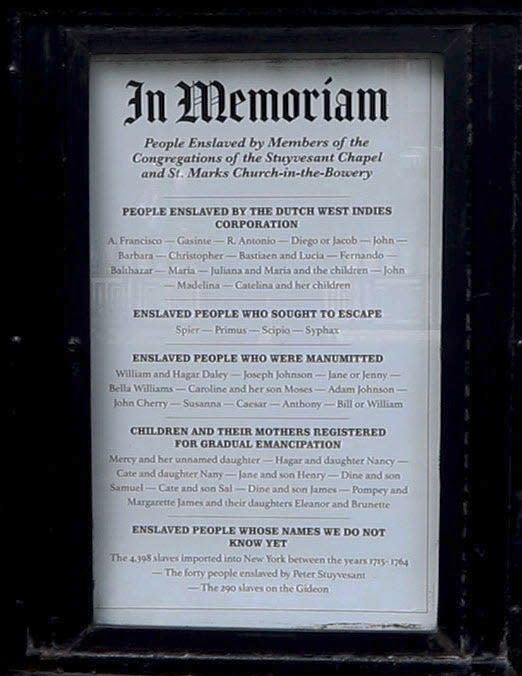
So what about the country?
Oast, the Bloomsburg University professor, is often asked if these decentralized efforts distract from national efforts, like H.B. 40 — a bill to create a commission to examine U.S. slavery and recommend remedies.
She thinks of it more as laying a foundation. And worries that reparations may be "too daunting" echo another familiar pattern for the researcher.
She recalls that in places like upper Virginia and Maryland, leading into the Civil War, many residents were “wringing their hands, wondering: ’Slavery is a really bad thing. We should do something about it ...
“’But it's such a big institution. And it's so complex. We can’t figure out how to tackle it.’ ”
Staff writer Saba Ali contributed to this report.
Kelly Powers and Sammy Gibbons are culture reporters for the How We Live team — covering race, culture and identity for the USA TODAY Network's Atlantic Region. Contact Powers at kepowers@gannett.com, and Gibbons at sgibbons@gannett.com.
This article originally appeared on USA TODAY NETWORK: Reparations find momentum in churches from Hyde Park to Texas

